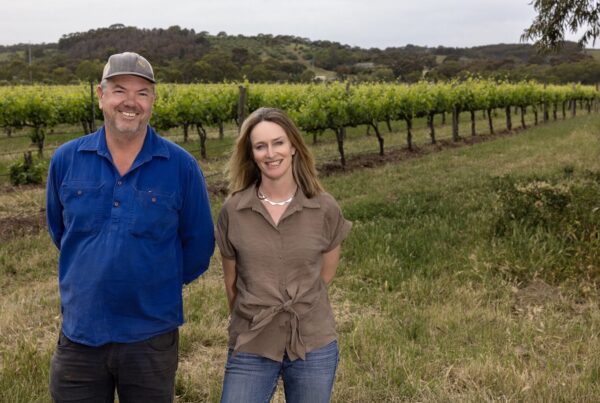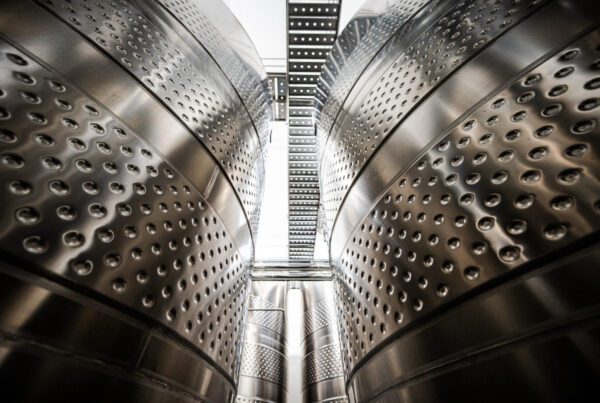
Delivering a high-quality event is important, and not easy.
The execution, the detail. The location, the venue, the room, the temperature of the room, the temperature of the wine, the natural light, the glassware, the food if there is food, the tasting mats, the invitations, the guest list, the rsvp management, the selection of wines, the collateral, the pouring, the words, the timing, the background noise, and so on.
The ability – or lack of – to nail the details can take an event from great, to average, to rubbish, in a nanosecond.
For all that, though, the execution and delivery is not the hardest part, or the most important.
That place is held by the concept, the purpose, the vision of what the event is.
The ambition, the chutzpah.
And few, if any, of our wine trade colleagues had more chutzpah than Leonard Paul Evans AO OBE.
The 20th Len Evans Tutorial was held in early November, with a dozen of our best and brightest talents experiencing a week full of tasting and tuition from industry leaders, that included the opportunity to taste some of the greatest wines of the world.
The value of those wines could be calculated and would run north of $200,000. But the value of the scholars being able to taste them blind together, developing their palates and their knowledge is priceless, both for them and the industry.
The great thing about the Tutorial is that it’s about investing in people, and it’s all about quality.
Those two key elements were there in the vision from the beginning, and for Australian wine, our wine culture, and the reputation internationally, they are concepts that are worth going back to again and again.
The Australia Decanted event in Lake Tahoe was another, in this case investing in USA sommeliers, that had a big impact on those who attended, and helped win hearts and minds in the world’s biggest fine wine market.
Winning hearts and minds isn’t easy, but we do have a couple of good weapons now in Australian Chardonnay in particular and Pinot Noir to a lesser extent, that we can use to change perceptions of Australian wine in the USA, Europe, Japan, and Korea.
It’s a bit reminiscent of the way in which Italian wineries used Cabernet Sauvignon as a way to gain credibility for their own varieties.
Wines like Solaia from Antinori, Sassicaia, and Cabernet from Angelo Gaja served to give markets used to paying high prices for Bordeaux reference points from Italy.
When the top Italian Cabernets proved that they could hold their own next to First Growth Bordeaux, it brought more credibility to their Sangiovese and Nebbiolo.
The rise in the appreciation of Barolo in particular has been stunning, but it wasn’t always revered the way it is today.
Australian Chardonnay, lined up against the best examples in the world, adds a lot to our reputation, as those markets I mentioned know, rate, and drink good Chardonnay. Likewise for Pinot Noir.
Len Evans, of course, was a great proponent of Chardonnay as a variety that could lead the charge in export markets for Australia.
Philip White isn’t averse to being contrarian and he has a different view and in a strange way both views have come to a fruition of sorts.
As we work with a panoply of Italian and Iberian indigenous varieties that have better affinity than Chardonnay to some of our regional environments, we’re seeing the benefits of those better regional/varietal matches.
Fiano in McLaren Vale is a perfect example.
White was right that copious amounts of Chardonnay in warm climate inland regions might not be the right move in the long term, either in terms of wine quality or water security.
In the right places, though, Chardonnay has turned out to be a flagship for Australia, and important to our reputation internationally.
In 2023, hopefully we will see a year of re-engagement for Australian wineries with their export markets.
Not everyone believes in export is worth it, of course.
Expensive to service, lower margin than domestic sales, subject to interest rate variations, arbitrary taxation changes, complex labelling laws, and a thousand other barriers, there are plenty of reasons why you wouldn’t export.
But fundamentally, a market is a market, be it in West Perth or Westchester, and access to export, I think, makes us a stronger industry.
It spreads our risk, increases our options, and exposes us to international competition that forces us to be better.
As we contemplate ProWein, Wine Paris, and myriad other opportunities to connect with customers, we will see people with vision and expertise hold tastings and events that shape perceptions of Australian wine and show our wine culture to the world.
We’ve got lost time to make up for.
The rest of the world didn’t stop travelling to markets for nearly as long as we did during Covid.
What’s more, our pent-up need to get out there and show and tell and sell will be focused on a smaller globe, minus China, so in taking away China and adding our impetus to make up for lost time, the coming year should see double the presence, attention, and efforts in key export markets from Australia’s wine ambassadors.
It’s pretty exciting to contemplate where we can, hopefully, get to in 12 months, despite the lingering Covid, the economic and political troubles, and the lost momentum over the last 30 months.
Thanks to the visionaries, few countries have greater wines or greater wine people to send out into the world.
• First published in the November-December 2022 issue of WBM – Australia’s Wine Business Magazine. Subscribe here.
Photo: Chris Elfes.













Recent Comments